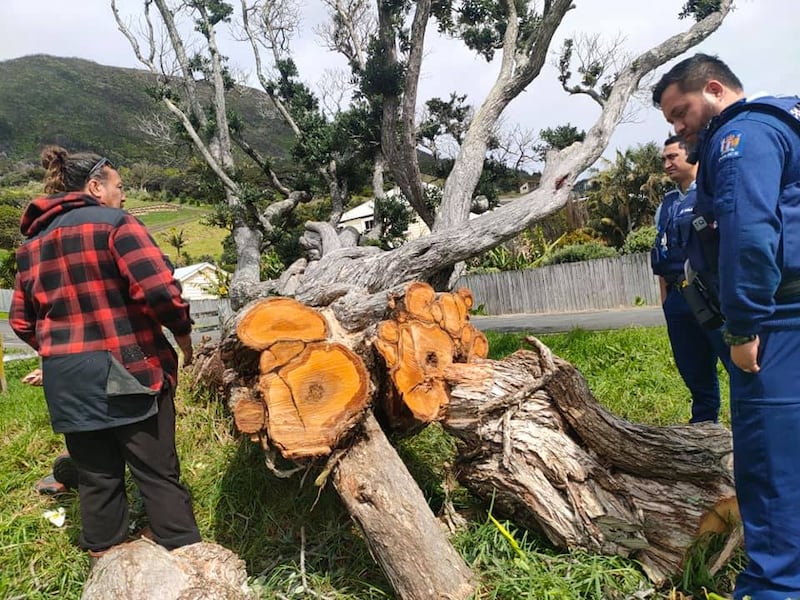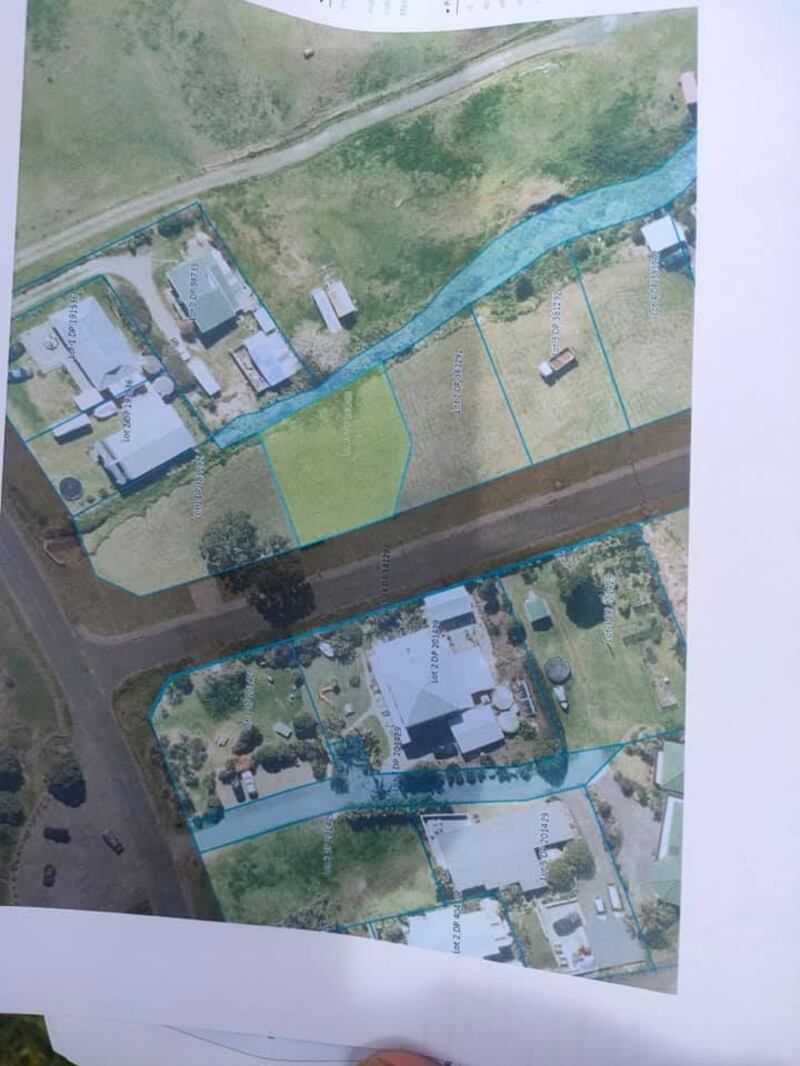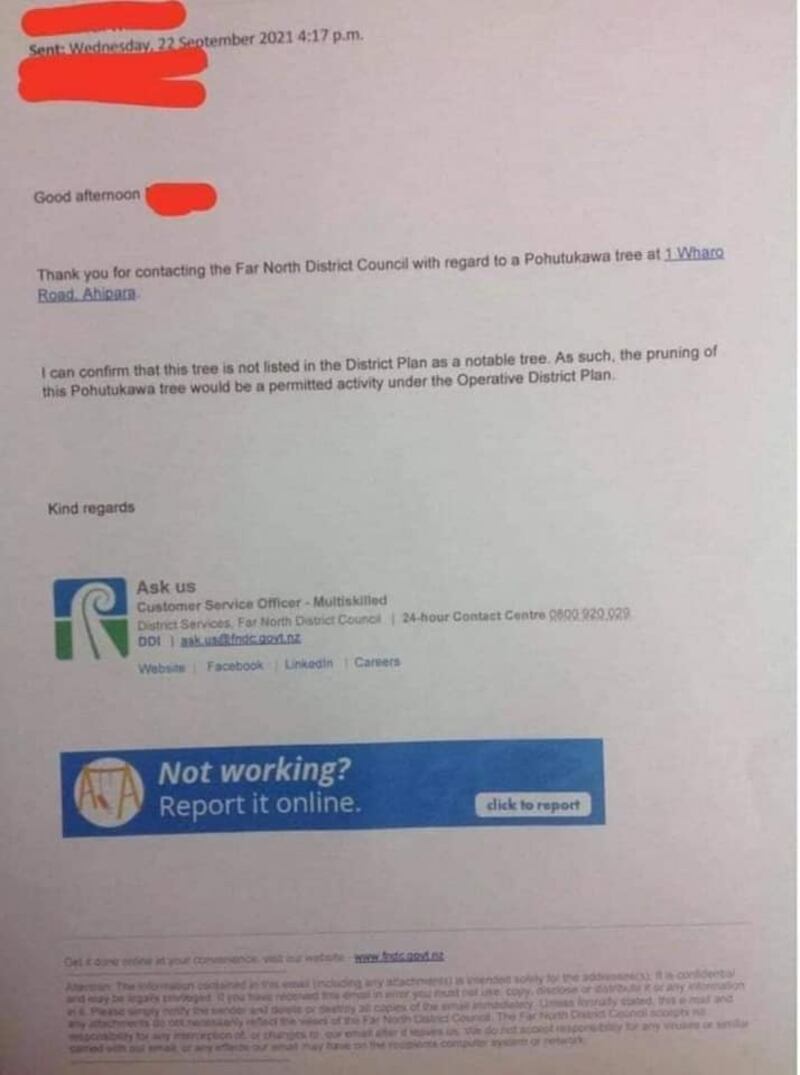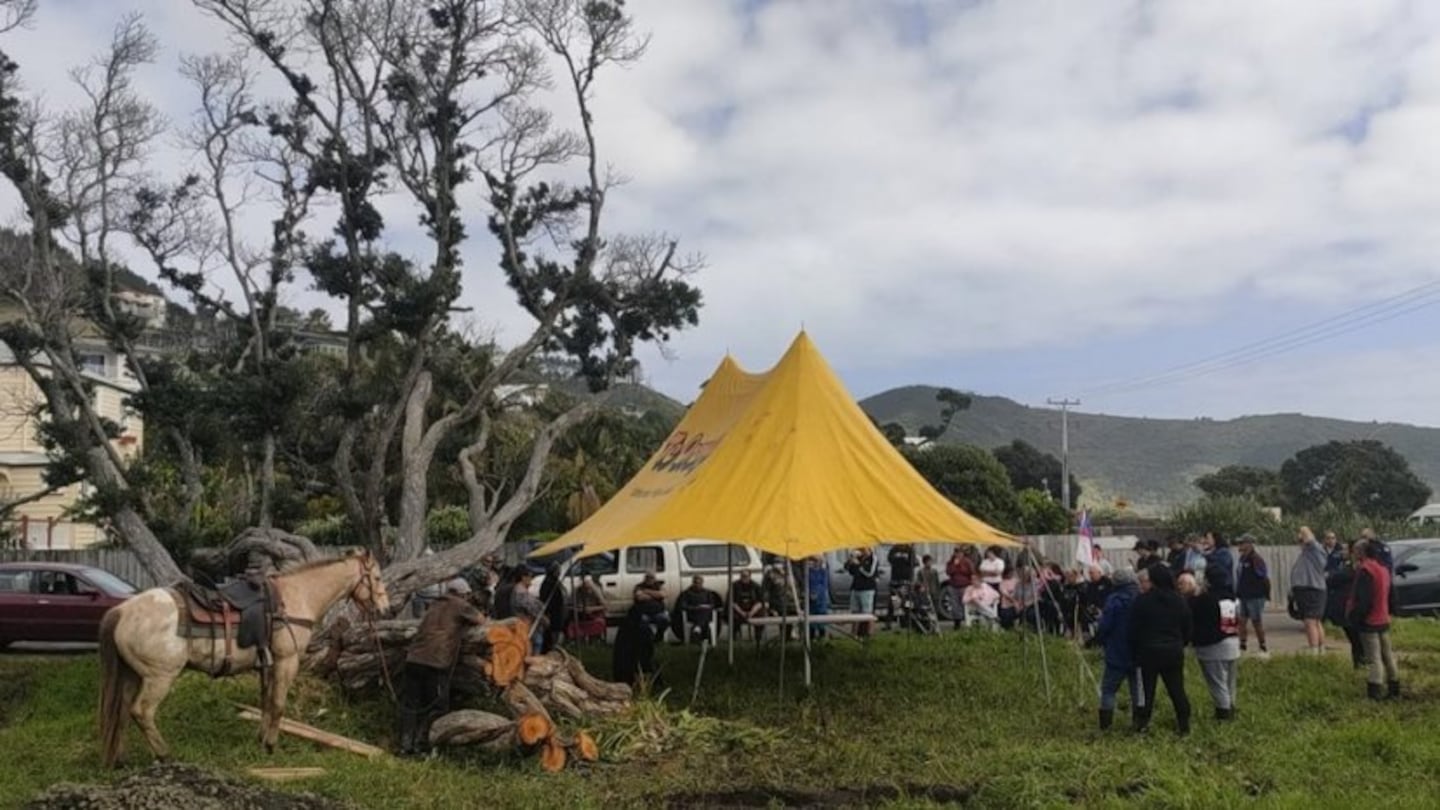Hapū hui on Moringaihe Māori reserve on Saturday. Source / Facebook
A 300-year-old Pōhutukawa tree that stands as one of the last vestiges of Māori occupation at Morongaihe Reserve in Ahipara, Northland was attacked last week, and the hapū of the area have met to discuss options, one being an occupation of the area to protect the tree.

Source / Facebook
The tree sits on land on Wharo Way overlooking Te Oneroa a Tōhē in Ahipara, which has seen large-scale development in recent years and is the original site of a marae of Te Rarawa chief Toakai. Following the land being gifted to the Catholic Church, which was then onsold, the land was used by the church as well as the Māori Land Court. Only one parcel of land on Wharo Way remains in Māori hands.
The whenua where the tree stands is now owned by Dr Cecil Williams, a local doctor at Te Hiku Hauora, a Māori primary health organisation in Kaitaia. At the time of writing, Te Ao Māori News was unable to obtain a comment from Dr Williams.

"The bright green section is the last Maori reserve left of the entire valley," says Rueben Taipari. Source / Facebook
Hapū from around the area, kaumātua and kuia, met on Saturday beside the tree to talk about the hurt and anger they feel from seeing the tree so badly damaged. Spokesman Rueben Taipari says it was an emotionally charged hui.
"The kuia couldn't even speak, they were so emotional. They were asked several times and only one spoke when it came to discussing Dr Cecil Williams. They were mamae, but also angry and these are our peaceful kuia."
"The same goes for our entire community, Māori and Pākehā. The tree is of sacred memory."

Source / Facebook
According to correspondence between Taipari and the Far North District Council, the tree is not a notable tree, something that is widely rejected by iwi.
In a letter to Taipari, the council wrote, "I can confirm that this tree is not listed in the District Plan as a notable tree. As such, the pruning of this Pōhutukawa tree would be a permitted activity under the operative district plan."
According to Te Rarawa chairman Haami Piripi, that statement cannot be further from the truth.
"People who have moved into this area, who have subdivided land, have really failed to recognise a taonga like that to the area, to us as a people, they don't give any credence to the importance of it."
"This particular tree has got a covenant on it, and there is a whole lot of confusion on how it relates to the district plan. The tree was standing since before the arrival of Pākehā to New Zealand."
Taipari says the kaumātua that spoke at the hui relived memories of the tree.
"The men spoke of memories as kids, we would pull our horses under to rest from the sun, but we never played or drank near it, we all knew it was special."
Claims by some that the cutting of the Pōhutukawa was to protect the health of the tree have been disputed by Piripi.
"Initially, it looks like an attack. But the people who did it say it's part of their ongoing care of the tree. That's questionable."
Plans are now underway for hapū to occupy the land in order to protect the tree, and also to highlight the issue of land being gifted to the Church, only then for it to be onsold to others, a common theme that is seen throughout New Zealand.
Taipari says hapū have long fought to have this land returned, "10 years ago, we tried to stop the sale of this whenua."
Occupation of the land will begin on Saturday, October 2.




